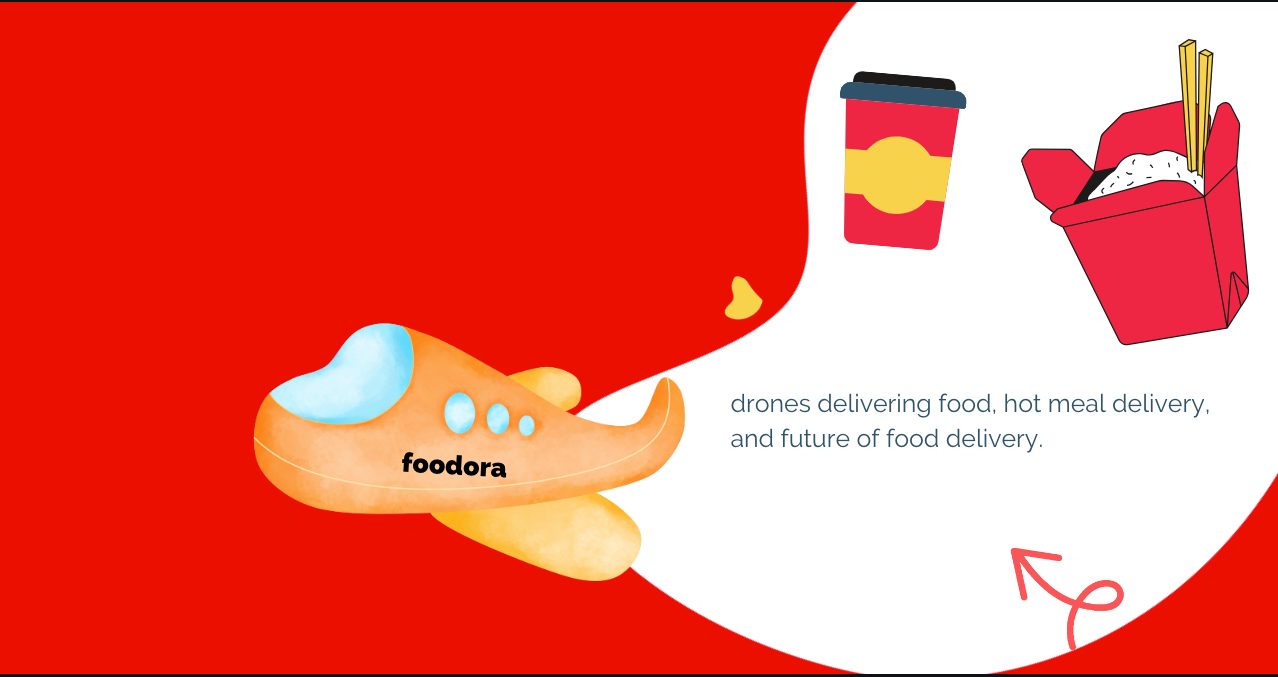Hot Meal Delivery Takes Flight: Could Drones Be the Answer for Remote Communities?
Meal delivery has long been a convenience city dwellers can’t live without — but now, new options are emerging for people living far beyond urban centers.
Take Northern Europe, for example. Sweden, Norway, and Finland — home to nearly 700,000 islands combined — boast coastlines filled with sprawling archipelagos that have shaped both culture and history. Many of these islands are connected to mainland cities by ferries and bridges, making travel possible but not always convenient. What residents often lack, however, is something their city neighbors enjoy daily: fast, hot food delivery right to their door.
#1Norwegian Start-Up Aviant Launches Drone Food Delivery on Swedish Island
A Norwegian start-up is aiming to transform food delivery for remote communities. Aviant, based in Trondheim, is pioneering the region’s first drone-powered food delivery service, starting on the Swedish island of Värmdö.
Although Värmdö is just eight miles (13 km) from Stockholm and easily accessible by car, bus, or ferry, its 46,000 permanent residents — a number that nearly doubles in the summer — have long struggled with limited access to hot food delivery options.
During a video call, Aviant’s co-founder and CEO, Lars Erik Fagernæs, shared a map showing which areas around Stockholm are covered by major delivery platforms like Foodora and Wolt.
“All the white and blue squares represent where Foodora and Wolt are available, while the black squares show where they’re not,” he explained. “That means around 87,000 people still don’t have access to a home delivery service. These residents live in suburban areas, and many would love to order takeaway — but simply don’t have the option.”
That’s now beginning to change. Since February, locals in Gustavsberg, Värmdö’s main town, have been able to order freshly made burgers from the Scandinavian chain Bastard Burgers, delivered directly to their door by drone using Aviant’s technology.
The cost of drone delivery is comparable to traditional car or bike couriers, thanks to the elimination of driver expenses. For now, Aviant is operating in a beta phase, handling just 10 orders per week while the system is tested. But Fagernæs and his team plan to scale operations significantly as the year progresses.
#2Drone Food Delivery Takes Flight in Scandinavia
Aviant, a Norwegian start-up, is pushing the boundaries of food delivery by introducing drone technology to regions that traditional services can’t easily reach.
The company recently launched its first drone-powered food delivery service on Sweden’s island of Värmdö, just eight miles (13 km) from Stockholm. Despite its population swelling from 46,000 to 100,000 during summer months, Värmdö residents have had limited access to hot meal delivery. Aviant’s drones are now bridging that gap, flying freshly made burgers from Scandinavian chain Bastard Burgers straight to customers’ doors.
Delivery costs are on par with traditional car or bike couriers, but with one major difference: drones remove the expense of a driver. Currently in its beta phase, Aviant is delivering around 10 meals per week to test reliability, but the goal is full-scale rollout by year’s end.
The start-up is also preparing to launch a similar service on Norway’s Nesodden peninsula—only four miles from Oslo by air, yet a 29-mile road trip. This expansion could give more than 100,000 residents access to food delivery for the first time.
Getting here wasn’t simple. “We’ve been testing for three years, and at first the fries were always soggy,” says Aviant co-founder and CEO Lars Erik Fagernæs. “Now, with improved insulated containers, meals arrive hot—even in winter.”
Customer reactions have been overwhelmingly positive. “People go crazy for it,” Fagernæs explains. “They call their neighbors and even their grandma—it feels like a UFO delivering their food.”
Looking ahead, Aviant plans to expand to 40 additional bases across Scandinavia over the next two years, targeting communities on the edge of rural and urban areas where car delivery is inefficient. Beyond Scandinavia, Aviant also sees opportunities in Canada, with its 52,000 islands, and the northeastern United States, with its lakes and rugged terrain.
Weather can occasionally ground the drones—particularly during high winds—but Aviant expects the service to maintain at least 90% uptime.
With the success of its pilot projects, Aviant hopes to establish Scandinavia as a global pioneer in drone food delivery technology—reshaping how communities in hard-to-reach areas enjoy hot meals at home.
#3Drone Food Delivery: Why Remote Areas Remain a Challenge
While drone delivery is taking off in suburban and semi-rural areas, flying hot meals into truly remote locations has proven far less practical.
Back in 2022, Aviant experimented with delivering Thai, Italian, and sushi dishes to residents outside of Trondheim, Norway. The novelty caught attention, but by August 2023 the service had quietly ended.
They’re not alone. In 2022, UK-based Skyports delivered school meals to children in the Orkney Islands—funded by Argyll and Bute Council—and even trialed a community "Fish and Chips Friday" service. Similarly, Germany’s Wingcopter partnered with the government to provide essential goods to rural households in 2023. And in China’s Zhejiang province, a local council subsidizes drone delivery of hot meals to elderly villagers in isolated mountain communities.
The pattern is clear: without government or corporate funding, the economics simply don’t work. The long distances mean high operating costs, which would make orders prohibitively expensive for customers or unsustainable for restaurants to cover. Add in the smaller populations of rural areas, and there just isn’t enough demand to balance out the expense.
In short, drones can make food delivery more accessible in suburban and hard-to-reach areas near cities, but in deeply rural regions, they remain more of a public service experiment than a scalable business model.
#4Skyports Eyes Expansion of Drone Delivery Beyond Mail
Since 2023, Skyports has been operating a drone delivery service with Royal Mail across the Orkney Islands. Now, the company is exploring how those same drones could be repurposed to bring back hot meal delivery—this time, extending access to all residents.
“We haven’t yet opened it up beyond Royal Mail users as it’s currently a strictly postal service. But absolutely, when the drones aren’t in use, we could look at carrying cargo from mainland outlets to the islands,” explains Alex Brown, Skyports Director.
Brown emphasizes that cost remains the critical factor. The company has been focused on perfecting operations first, but once the service is streamlined, the economics of scaling food delivery will come into play.
“You could absolutely make something like that work. The more you utilize the drone, the better. Models where you have an anchor customer underwriting the core costs—and then bolt on new commercial services—are where real opportunities lie,” he adds.
However, Skyports must also navigate UK aviation regulations, which make commercial drone operations more complex compared to Europe, Asia, or Australia. Any operator must work closely with the Civil Aviation Authority (CAA) to secure segregated airspace, ensuring drones avoid collisions with other aircraft and minimize risks to people on the ground.
While these requirements raise barriers, they also prioritize safety and reliability. Brown notes that rural drone operators can strengthen their case by highlighting low-traffic airspace, sparse populations below, and advanced onboard navigation and hazard detection systems. Encouragingly, he says the UK government has become more open to supporting drone entrepreneurs.
“It is getting easier, and to give the UK government credit, they are making good progress,” Brown concludes.
Reactions
Already reacted for this post.






